Managing the Project Budget - Free eBook in PDF Format
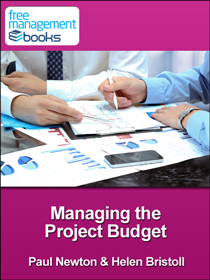 |
 |
|
Book Description - ISBN 978-1-62620-982-9 (57 Pages)
This eBook describes the process of managing the project budget and its associated costs. The first task is to set the budget based on cost estimates and the second is to manage the costs so that they remain within the budget that has been set. Managing a project budget can be both specialized and complex and the aim of this eBook is to give you a general understanding of what is involved so that you know what should be done, even if you don't have the skills needed to actually do it.
Chapter 1 - Managing Project Costs
This area includes the processes involved in planning, estimating, budgeting and controlling costs so that a project can be completed within the approved budget. Cost management procedures are used to create a budget, and to monitor performance relative to that budget. Effective monitoring requires a focus on the actual and forecast consumption of elements such as people's time, materials, equipment, facilities, etc.
Chapter 2 - Estimating Project Costs
This step involves estimating the costs of each activity in the project including both human resource and physical resource costs. Because this step often occurs in the planning phase, it is important to understand that the estimated costs are your "best guesses" at the actual costs of each activity.
Chapter 3 - Calculating the Total Budget
Using your best-guess estimates, the next step is to create a realistic project budget. In this step, you will determine the cost baseline and the funding requirements for the project. A good project budget will help you make key decisions with respect to the project schedule and resource allocation constraints.
Chapter 4 - Monitoring Project Expenditure
Good project managers will carefully monitor the cost of their projects. This includes watching to see where actual cost has varied from estimated cost. Cost control also involves informing the stakeholders of cost discrepancies that vary too much from the budgeted cost.
Chapter 5 -Buying-in Goods and Services
Buying-in goods, often referred to as procurement, is often thought of in terms of raw materials, but it can actually cover a wide range of items that could be used to complete a project. Even services that will be needed as part of the work would be included under the umbrella of procurement. Knowing what is going to be needed, and when it will be needed, it a crucial first step toward getting this part of project management done correctly.
Chapter 6 - Managing Project Suppliers
Almost all projects will require some external resources, services or products to be able to meet their objective. Those that cannot be provided internally will need to be purchased from a supplier, often one that offers specialist skills the project requires. As with all other individuals or organizations working on the project, this relationship must be carefully managed with clear expectations, service level agreements (SLA's) and communications properly planned throughout the contract life cycle.
Chapter 7 - Planning Contract Management
This process determines which products or services a project will need to procure from an external source. Once this has been decided the project manager will determine the appropriate types of contracts that will need to be used on the project. The process of obtaining seller responses, selecting a seller, and awarding a contract may need to occur multiple times if there are multiple contracts and for each instance it will includes issuing the bid package to potential sellers, evaluating potential seller proposals and finally selecting the winning seller proposal.
Chapter 8 - Understanding Contract Options
There are several different types of contract that can be used, although the most common is the fixed-price type, which involves setting a fixed total price for a precisely defined product or service to be provided. Changes in scope can be accommodated, but generally at an increase in the contract price. Sellers under fixed-price contracts are legally obligated to complete such contracts, with possible financial damages if they do not.
Chapter 9 - Managing Supplier Relationships
This is the process of managing relationships with sellers, monitoring contract performance, taking corrective actions if required, and controlling change. This is the most time consuming element of the buying-in processes as far as the project management team is concerned as it covers monitoring the supplier's performance against the terms specified in the contract.
| You will learn: |
|
![]()
![]()
Background
When you think about it, all of business is about cost management. After all, if the revenues don't add up to be more than the expenses at the end of the day (or the end of the year), what is the point of being in business in the first place? The ability to control costs and maximize revenues is the name of the game in any for-profit organization.
With that in mind, it only makes sense that an individual project would retain many of the same key elements. If you are able to control project costs successfully, that project will stand a much better chance of being deemed a winner in the end.
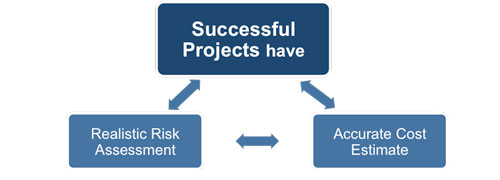 |
Finishing the project with the desired outcome is only going to be viewed positively if costs are managed and kept within the project's approved budget. Project cost management is the process of bringing as much predictability and control as possible to the expenses of a project. Surprise expenses are the enemy of any organization, so being able to accurately forecast the costs of a project ahead of time is a key skill to possess.
A talented and experienced project manager will be able to analyze the goals of an upcoming project and work through a series of steps to make sure that project is delivered in as cost-effective a manner as possible. There are generally four steps that are used in the project cost management process. Understanding the purpose of each of these phases will help you get a better idea of what project cost management can do.
Planning Costs
When the project is in the initially planning stages, the expected costs should be estimated in order to begin developing an outline of what the overall expense will be. It is important at this point to do a thorough job of anticipating costs that can relate to the project from a variety of areas.
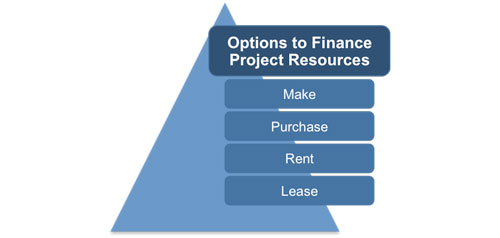 |
Some of the costs that you incur will be obvious and easy to calculate, but others may be a little harder to put your finger on. One important consideration when planning costs is the method that will be used to finance these costs. Each project will use a variety of finance options and the final selection will vary between projects and organizations.
Estimating Costs
One of the obvious costs associated with any project is the people that will be working on the task. Payroll or contractor expenses are usually among the biggest costs for any project. So it is essential to do a good job of estimating the total hours of work needed - and the cost of those hours - to get your final estimate as correct as possible. Also, expenses associated with raw materials and equipment are other common outlays that should be anticipated.
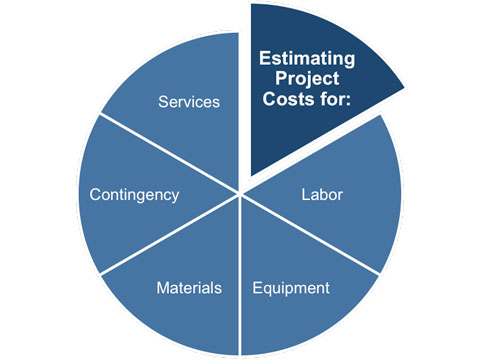 |
The 'hidden' and indirect costs that you will need to plan for are obviously harder to deal with, and will vary wildly from organization to organization depending on the task at hand. This is where you can lean on a detailed project plan that has been created right from the outset.
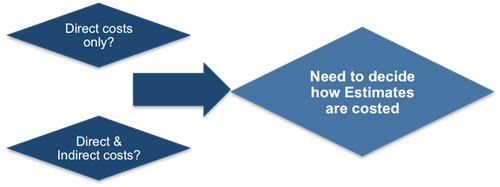 |
Look carefully at the scope of the project itself to find anything that might not already be included in your estimated costs. It might take some time and effort to locate all of the costs that will end up relating to the project, but this is a necessary step to take.
Determining the Budget
Creating a budget for your project is the formalization of the work you have done in estimating the costs. Now that you have a good idea of what the various inputs will cost throughout the project, you can develop a proper budget that outlines those expenses and creates a target for you to aim for once the project gets underway.
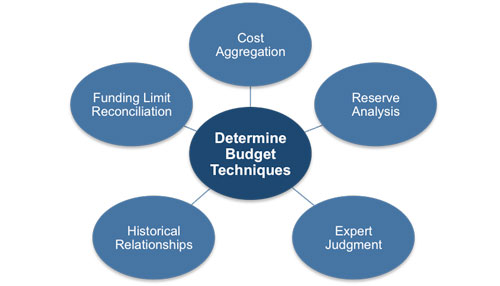 |
Not only is the project budget a helpful planning tool, but it also may be necessary before getting permission to start the project. Just as with any other business activity, having an accurate budget helps all parties involved to understand the parameters of the work and what assets they have available to them.
The obvious need for a project budget stems from making sure there is enough money available to get the project completed as intended. You don't want to make it part way through a project only to realize that the money you need isn't going to be available on time - or at all.
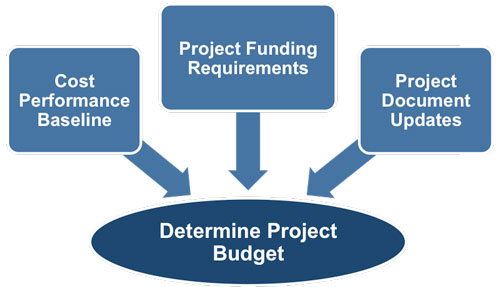 |
Knowing the costs up front means you can build the project into the overall budget of the organization as a whole and be sure funds are ready as required.
Controlling Costs
Costs need to be controlled carefully throughout the process to make sure the budget doesn't get out of control and end up overrunning your plans. Also, just because you have budgeted for a certain amount doesn't mean that total amount needs to be spent. Finishing a project on time and on budget is great, but finishing the project on time and under budget is even better.
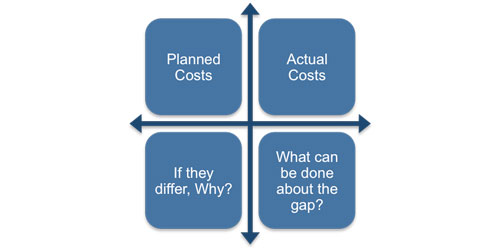 |
Any project manager knows that things never go exactly according to plan, so planning in an element of contingency or saving could help when unexpected expenses pop-up in other parts of the project. If one area of the project is going to end up over budget, it will be a great help if another portion of the task comes in below the estimate that you had laid out.
 |
Project cost management is one of the top skills and that a good project manager should have and want to develop. The diagram above shows the various outputs that come out of the process used to control project costs. As a leader within your organization, watching the bottom line is something you should always have in the back of your mind.
It is easy to let costs run wild, especially with big projects that have many different departments and individuals involved. Building a realistic budget, and then keeping to that budget as closely as possible, will put your projects on a track toward a positive conclusion.


